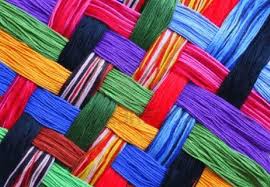Stamp: Handcrafts (Gobelin) (Turkey 2015)
Handcrafts (Gobelin) (Turkey 2015)
06 August (Turkey ) within release Handcrafts (Gobelin) goes into circulation Stamp Handcrafts (Gobelin) face value 4.50 Turkish old lira
| Stamp Handcrafts (Gobelin) in catalogues | |
|---|---|
| WADP Numbering System - WNS: | WAD:TR056.15 |
Stamp is vertical format.
Also in the issue Handcrafts (Gobelin):
- Stamp - Handcrafts (Gobelin) face value 0.30;
- Stamp - Handcrafts (Gobelin) face value 1.40;
- Stamp - Handcrafts (Gobelin) face value 2.80;
- Stamp - Handcrafts (Gobelin) face value 4.50;
- Stamp - Handcrafts (Gobelin) face value 10;
|
Data entry completed
80%
|
|
|---|---|
| Stamp Handcrafts (Gobelin) in digits | |
| Country: | Turkey |
| Date: | 2015-08-06 |
| Size: | 26 x 36 |
| Perforation: | 13.5 by 13.5 |
| Format: | Stamp |
| Face Value: | 4.50 Turkish old lira |
Stamp Handcrafts (Gobelin) it reflects the thematic directions:
In European academic traditions, fine art is made primarily for aesthetics or creative expression, distinguishing it from decorative art or applied art, which also has to serve some practical function, such as pottery or most metalwork. In the aesthetic theories developed in the Italian Renaissance, the highest art was that which allowed the full expression and display of the artist's imagination, unrestricted by any of the practical considerations involved in, say, making and decorating a teapot. It was also considered important that making the artwork did not involve dividing the work between different individuals with specialized skills, as might be necessary with a piece of furniture, for example. Even within the fine arts, there was a hierarchy of genres based on the amount of creative imagination required, with history painting placed higher than still life.
In European academic traditions, fine art is made primarily for aesthetics or creative expression, distinguishing it from decorative art or applied art, which also has to serve some practical function, such as pottery or most metalwork. In the aesthetic theories developed in the Italian Renaissance, the highest art was that which allowed the full expression and display of the artist's imagination, unrestricted by any of the practical considerations involved in, say, making and decorating a teapot. It was also considered important that making the artwork did not involve dividing the work between different individuals with specialized skills, as might be necessary with a piece of furniture, for example. Even within the fine arts, there was a hierarchy of genres based on the amount of creative imagination required, with history painting placed higher than still life.
Textile is an umbrella term that includes various fiber-based materials, including fibers, yarns, filaments, threads, different fabric types, etc. At first, the word "textiles" only referred to woven fabrics. However, weaving is not the only manufacturing method, and many other methods were later developed to form textile structures based on their intended use. Knitting and non-woven are other popular types of fabric manufacturing. In the contemporary world, textiles satisfy the material needs for versatile applications, from simple daily clothing to bulletproof jackets, spacesuits, and doctor's gowns.
A craft or trade is a pastime or an occupation that requires particular skills and knowledge of skilled work. In a historical sense, particularly the Middle Ages and earlier, the term is usually applied to people occupied in small scale production of goods, or their maintenance, for example by tinkers. The traditional term craftsman is nowadays often replaced by artisan and by craftsperson.



